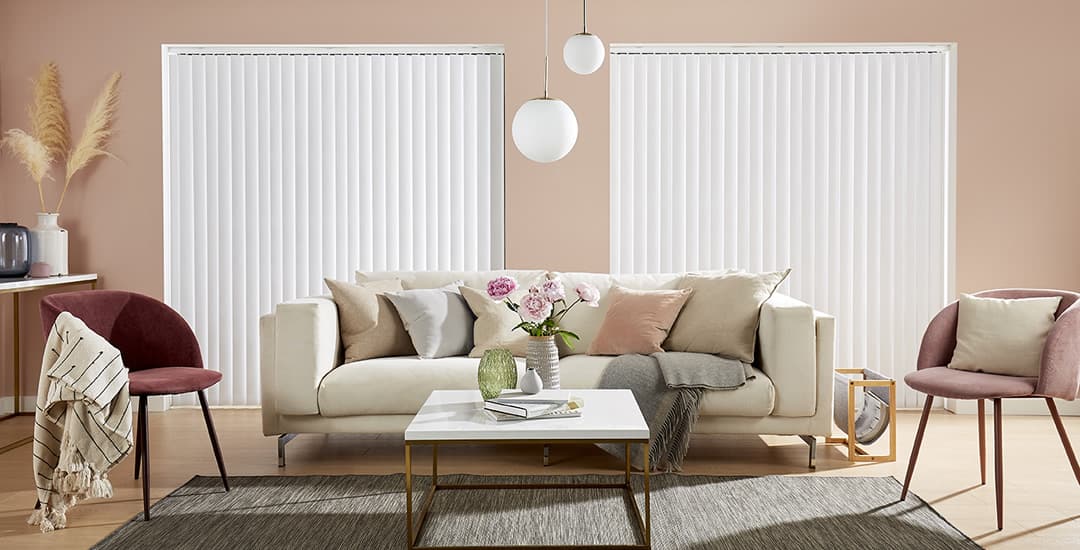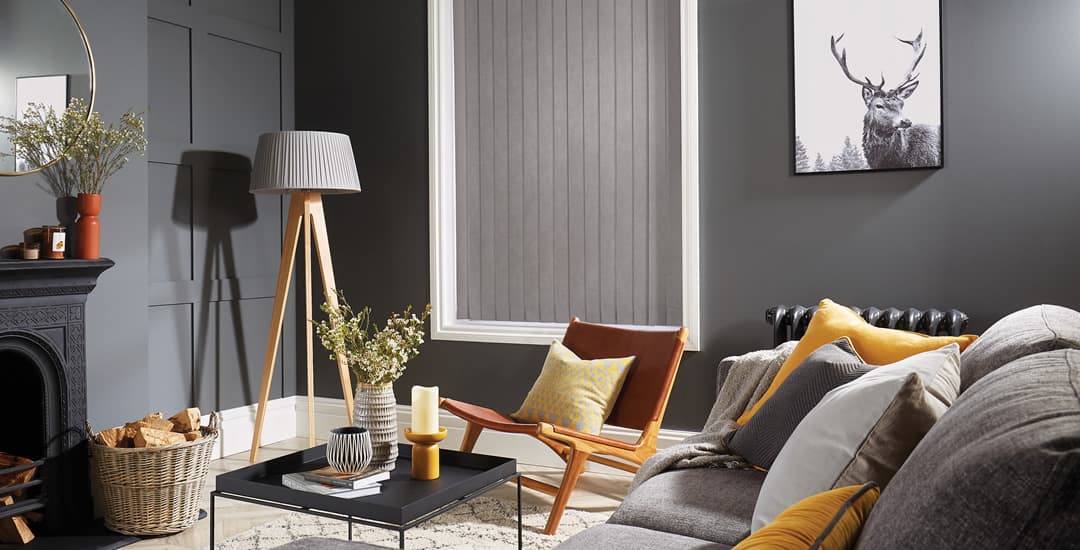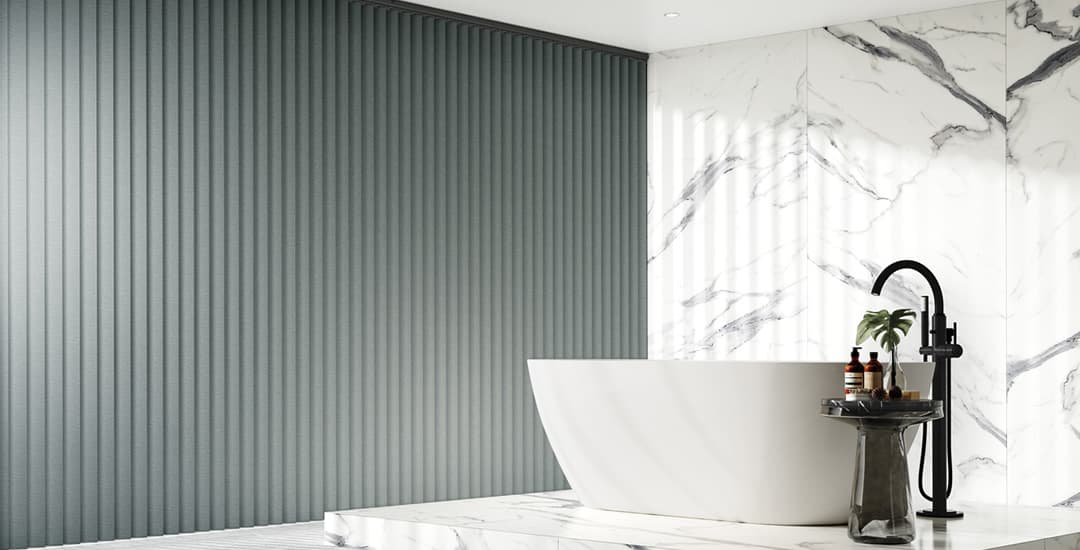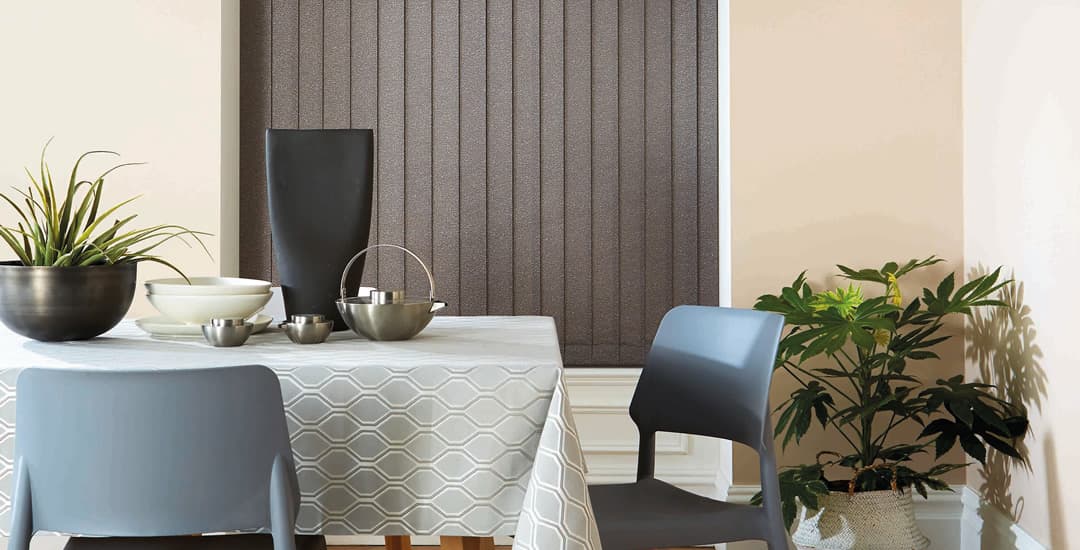
You need to turn your blinds (regardless of type) to the fully closed position without any gaps or spaces between slats or louvres (where present) in order to keep the heat you’re paying for inside of the room as effectively as possible during the winter.
But when it comes to vertical blinds, which have louvres which can turn either to the left or the right, which way do you turn blinds in the winter to keep heat in most efficiently? For regular vertical blinds it doesn’t really matter, as long as the louvres are fully closed and lying flush together.
But if you paid a little more for your blinds to have a special thermally insulating blackout coating (and I strongly advocate for doing this as it’ll save you the small additional outlay this costs inside of a year in many cases) then you can maximise the efficiency of the blind by keeping the coating facing out into the street.
This blog post will give you all the insider info you need about which way to turn vertical blind louvres to insulate your window, to keep the heat in to best effect.
Which way do you turn blinds in the winter?

In winter, you’ll want to keep your blinds closed to preserve heat. Now, obviously if you’re at home during the day, doing this in the rooms you’re using is also going to have the unfortunate side effect of blocking out your natural light too, which may potentially lead to impromptu hibernation and/or cause you to start looking a little unhealthy in short order.
For this reason, most people keep their blinds open in the room or rooms they use during the day in the winter in spite of the fact that this prevents your blinds from insulating your window during this time. But if you do close your blinds as soon as it starts to get dark – plus consider keeping the blinds closed in the rooms you don’t use during the day – you can maximise their efficacy at keeping the heat in the house without depriving you of all of your natural light.
Which way do you turn vertical blinds to keep heat in when you’re heating a room?

If you’re proactively paying good money to heat a room, you’re probably pretty invested in keeping that heat in for as long as possible and where possible, enabling optimum insulation to try to reduce your heating spend.
This means closing the blinds, and in the case of vertical blinds with louvres that can rotate either to the left or to the right, a lot of people wonder which way is the right way or best way to turn the louvres to keep heat inside of the room.
For regular non-blackout vertical blinds that don’t have a blackout and/or thermally insulating coating on one side, it doesn’t matter at all. In fact, you might want to switch the direction you turn the blind’s louvres in now and then to allow both sides of the blind to get equal amounts of exposure to the sun, so that once the blinds are getting a little long in the tooth, their fabric will still appear uniform and not more faded on one side than the other.
Which way do you turn vertical blinds to keep heat in if the louvres have a thermally insulating coating?

So, about that thermally insulating and/or blackout coating then. Which way do you turn vertical blinds to keep heat in if your blinds have a special insulating surface on one side? In this scenario, close your blinds with the blackout/thermally insulating lining facing outwards (into the garden/street) to maximise its efficiency.
It doesn’t cost masses more to buy vertical blinds with a thermally insulating coating that also allows it to function as a blackout blind, so have a look at these options too when you’re shopping around; this could pay for itself in terms of the saving it allows you to make on your heating bills sooner rather than later!




